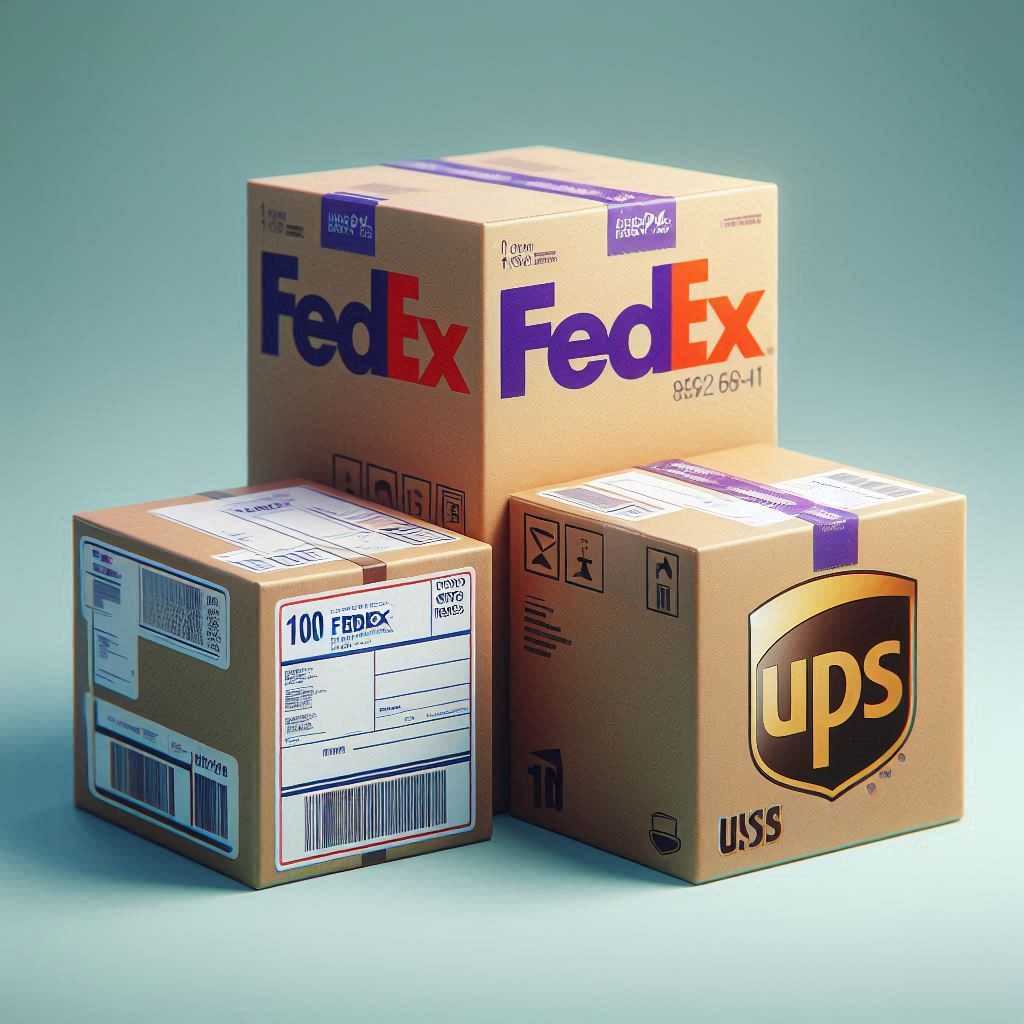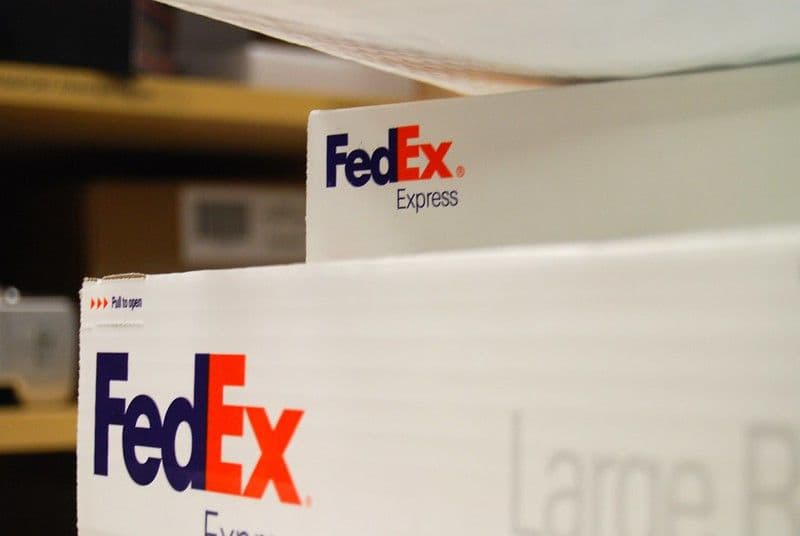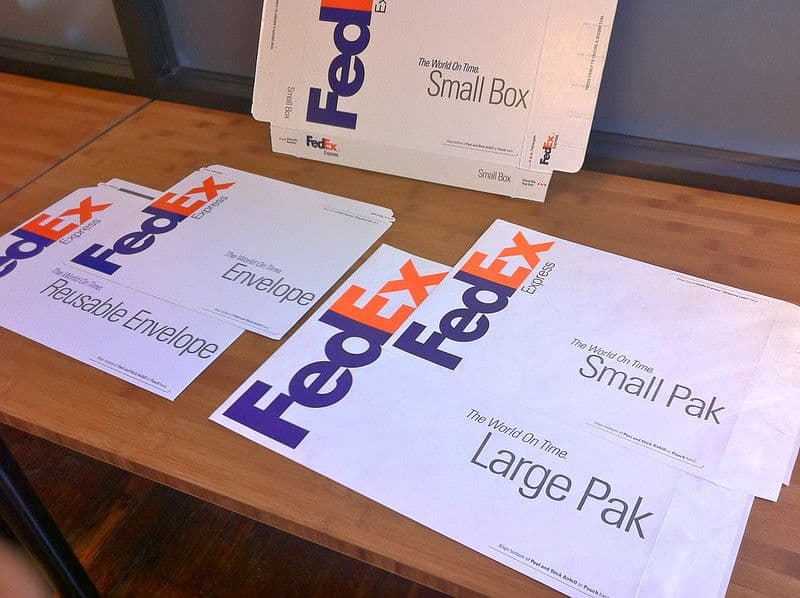When it comes to shipping and logistics, every detail matters. Choosing the right shipping carrier for your business can significantly impact your profits and make all the difference in increasing operational efficiency
To help you make that decision, here at Airpals we offer you easy access to different shipping services provided by our partners. Let’s see what those are and how they work, so you can determine which one fits your business needs better.
Table of Contents
- Differences Between USPS, UPS, and FedEx
- USPS
- UPS
- FedEx
- Cheapest Shipping Option
- Fastest Shipping Carrier
- Best Shipping Service for Different Package Sizes
- Small, Lightweight Packages
- Large, Heavy Packages
- Which Shipping Carrier Has The Best Discounts?
- Which Is The Best Shipping Carrier Option for Your Business?
Differences Between USPS, UPS, and FedEx
The Airpals platform works with the three major carriers available in the U.S. shipping market: USPS, UPS, and FedEx. These are well-established companies with a long history of providing a reliable service to consumers and small businesses across the U.S. territory.
| Carrier | Best For | Pricing | Key Services |
|---|---|---|---|
| USPS | Small packages, letters, and PO Box deliveries | Most affordable | Ground Advantage, Priority Mail, Priority Mail Express |
| UPS | Heavy, large, and business shipments | Higher for express services | UPS Ground, UPS Next Day Air, UPS 2nd Day Air, UPS 3 Day Select, UPS Worldwide Express |
| FedEx | Express shipping and international deliveries | Generally higher for express and international deliveries | FedEx Ground, FedEx Express Saver, FedEx Priority Overnight, FedEx International |
Given that they all offer similar services and competitive rates, the choice between any of them will depend on several factors:
- Destination
- Weight and size of the package
- Delivery time.
Ultimately, the specifics of your package and budget will dictate which of the three is the best for any given case.
For businesses, the challenge is to find the best price and provider to suit their needs. Shipping needs can vary greatly from one day to the next. One day, you might need to ship something super time-sensitive, requiring a carrier with next day delivery. Another day, you might need to ship something that isn’t urgent, opting for the cheapest way to deliver your package, even if it takes longer.
Let’s look closely into them.
USPS
The United States Postal Service (USPS) is the official and independent agency of the U.S. federal government in charge of the postal service in the country and its territories. They have the biggest reach of all the major carriers, as they ship six days per week to every address in the U.S. including associated states, military bases, and diplomatic posts, as required by law.
The USPS also has a monopoly on first-class mail (postcards and envelopes) and exclusive access to personal letterboxes as well as every PO box marked as “U.S. Mail”.
With such an extensive network, alongside the fact that it is a public service run by the federal government, the USPS can offer considerably lower pricing for small packages and access to remote areas not cheaply available for the other carriers.
This also applies to international shipping, where the USPS leverages its relationship with other countries' post offices to allow for cheaper, albeit slower, package delivery.
Pros of USPS
- Of all carriers, USPS offers the best rates for lightweight packages under 20 lb.
- As stated before, the USPS has a very extensive network, which allows them to operate in remote or rural areas without needing to include surcharges.
- It is the only one of the three carriers that have Saturday delivery with no extra charge for the final price, as it’s part of its mandate of delivering mail six days a week, as determined by law.
- USPS offers unique solutions like Priority Mail Cubic, which is priced based on the package dimensions, and not the weight or shape of the object being sent (within certain limits). This is part of Priority Mail, their next-day to 2-day delivery service.
Cons of USPS
- While it’s usually reliable, there have been cases where packages get lost in the USPS network for an extended time, which paired with the more limited tracking system it has (compared to other carriers), makes it an aspect to consider when it comes to shipping valuable items.
- The size and reach of its operation make its customer support unable to attend to every request or complaint that arises, so in case of an emergency, there’s a real possibility that a solution won’t be found quickly enough.
- It has a less comprehensive international service: The USPS depends on other carriers and entities to ship packages to other countries, which adds potential mistakes and complicates the logistics.
UPS
The United Parcel Service (UPS), is an American multinational shipping company and currently the largest courier company in the world, surpassing FedEx and DHL. UPS differentiates its services by offering a broader range of options, faster shipping, customizable delivery times for specific business needs, and affordable shipping rates.
Over its long history, UPS has built close ties with domestic and international businesses, building a solid reputation of trustworthiness in the industry.
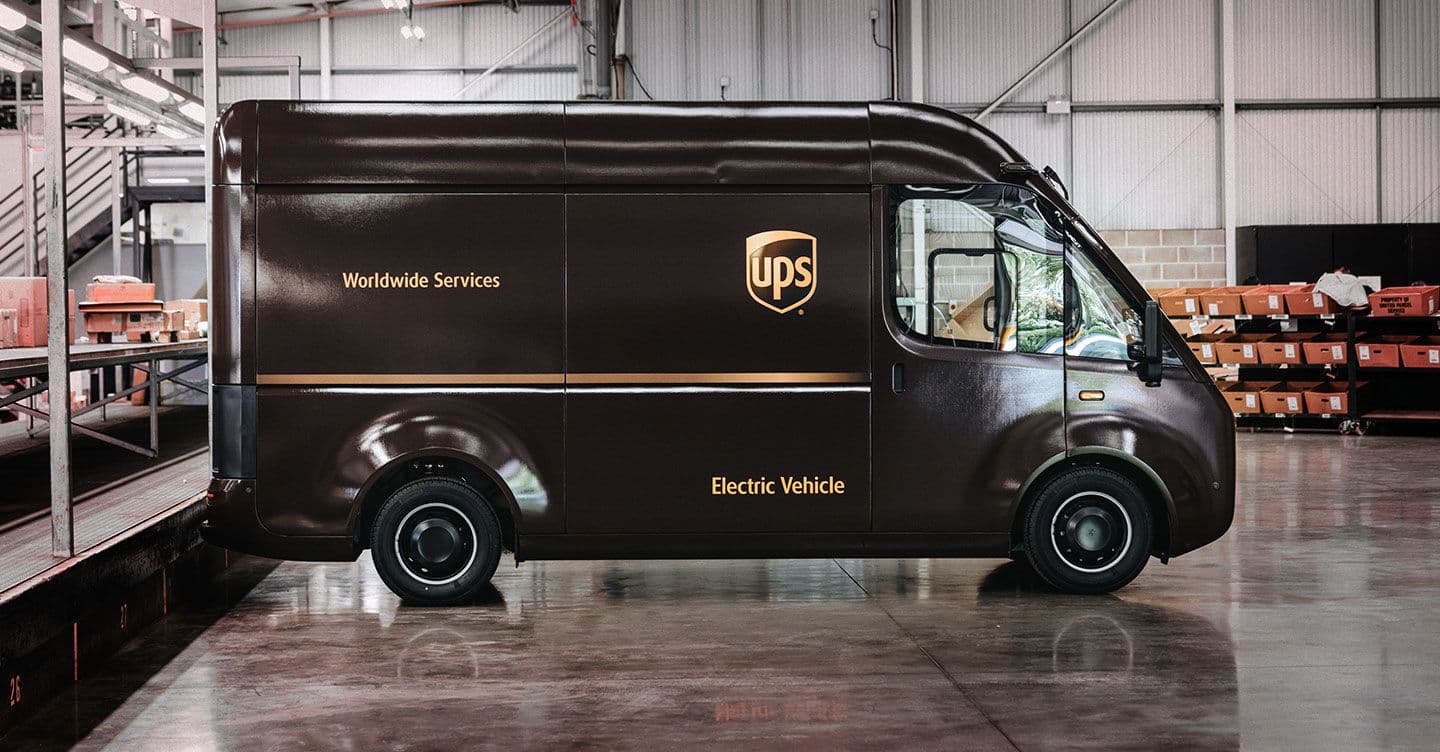
Pros of UPS
- They have one of the most reliable ground services (UPS Ground) in the carrier industry, with reasonable rates and flexible delivery times that can adapt to customer needs, ranging from normal 1-5 days to overnight.
- UPS specializes in the delivery of heavy packages as they allow a higher maximum weight (150 lbs) than USPS (70 lbs) and offer more competitive rates for that kind of package.
- One of their value-added services is insurance (liability for loss or damage) for high-value items up to a maximum of $50.000, making it the go-to choice to deliver expensive or luxury items.
Cons of UPS
- UPS tends to add considerable surcharges to the base rate of their delivery service, depending on the specifics and details of the order, making it less cost-effective for small businesses.
- It’s more costly to use UPS shipping to send packages to rural or remote areas, as they charge extra fees for it.
- As one of the most used carriers, UPS can experience high demand during the holidays and other peak shipping seasons, which can cause delays or limit their capacity to offer express services.
FedEx
Formerly known as Federal Express, FedEx specializes in overnight shipping and express deliveries, which makes it the right option for shipping time-sensitive items, like samples, corporate gifts, or important documents. Naturally, they also offer standard services with competitive shipping rates through their FedEx Ground subsidiary.
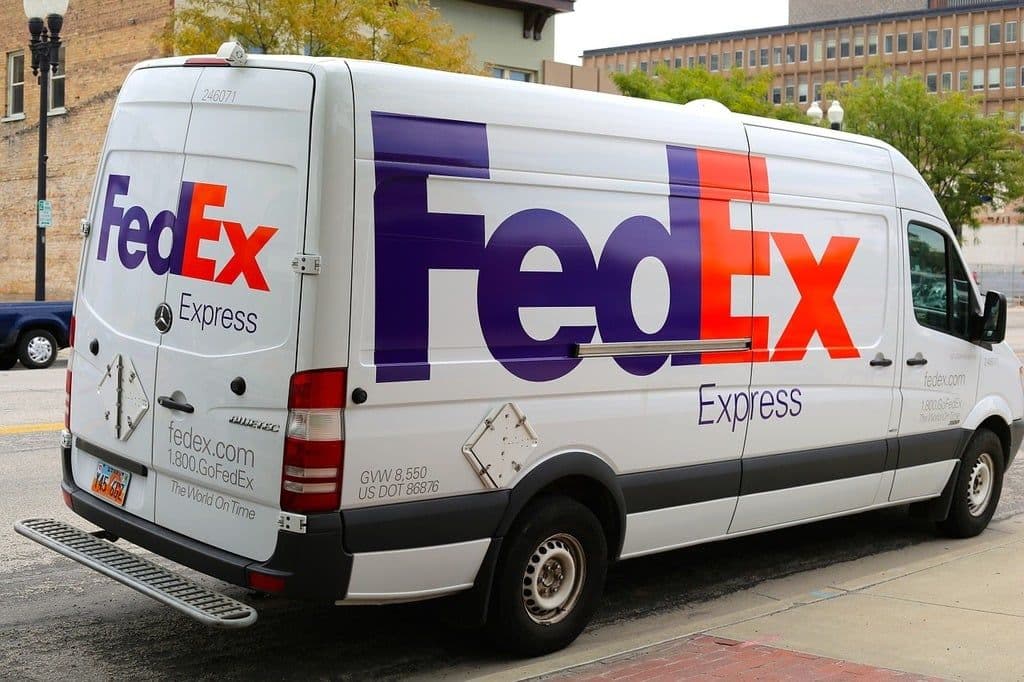
Pros of FedEx
- FedEx offers an extensive range of shipping services and delivery options with different time ranges.
- With its overnight delivery and same-day service, FedEx leverages its air freight expertise and infrastructure to provide fast and reliable shipping.
- With its real-time tracking capabilities and tools, FedEx can offer live updates throughout the entire route for shippers and recipients.
- They offer both proprietary and proven vendors boxes for cold shipping, alongside a full suite of solutions aimed at tracking and controlling the status of the items during transit.
Cons of FedEx
- FedEx can have too much pricing variability depending on the destination and service levels, which can reduce cost-efficiency for businesses.
- Additionally, FedEx tends to have higher base rates than UPS and USPS, including their flat rate and express shipping.
- When it comes to rural areas, FedEx has more limited coverage than its competitors.
Carrier Services Overview
Popular USPS Services:
- Priority Mail: Offering delivery within 1-3 business days, Priority Mail is a widely used service for both domestic and international shipments, providing a cost-effective yet speedy option.
- First-Class Mail: Ideal for lightweight, standard-size letters and parcels, First-Class Mail is a popular choice for everyday mailing needs, offering reliable delivery at an economical price.
- USPS Ground Advantage: Formerly known as Standard Post, this service provides an affordable option for shipping non-urgent and oversized packages.
- Priority Mail Express: This is the USPS's fastest shipping service, offering overnight to 2-day delivery guarantees, including Sundays and holidays for many locations.
Popular UPS Services:
- UPS Ground: Known for reliability and cost-effectiveness, UPS Ground is a popular choice for domestic shipments that don't require expedited delivery. These services are preferred by companies that need their stuff delivered, but time is not an urgent matter (I’m talking to you, amazon.com)
- UPS Next Day Air: For urgent shipments that require a reliable provider, UPS Next Day Air ensures next-business-day delivery, often by 10:30 a.m. or 12:00 noon to most U.S. addresses. These deliveries might take a little longer if they are done in rural areas, but the next-day delivery is almost guaranteed, even if we are talking about a house on the outskirts of Smallville.
- UPS 2nd Day Air: A great middle-ground option for shipments that need to arrive quickly but don’t require overnight delivery. UPS 2nd Day Air ensures packages reach their destination within two business days, making it ideal for time-sensitive but not ultra-urgent deliveries.
- UPS 3 Day Select: When fast delivery is important but you don’t need overnight or two-day shipping, UPS 3 Day Select gets the job done. It provides reliable three-business-day delivery across the U.S. at a more budget-friendly rate than air services.
- UPS Worldwide Express: This service offers guaranteed delivery by the second business day to over 215 countries and territories, making it a preferred option for international shipments that require speedy delivery, even to the far corners of the planet.
Popular FedEx Services:
- FedEx Ground: This service is favored for cost-effective, ground shipping within North America. It's ideal for less urgent shipments and offers guaranteed day-definite delivery. A lot of your online shopping gets delivered this way. Check your recycling bin boxes, you might find their logo over there.
- FedEx Express Saver: When three-day delivery is fast enough, FedEx Express Saver guarantees delivery within three business days, making it a solid middle-ground option between economy and expedited services.
- FedEx Priority Overnight: A go-to option for urgent shipments, FedEx Priority Overnight ensures delivery by 10:30 a.m. (or noon in some locations) the next business day.
- FedEx International: Catering to global shipping needs, FedEx International offers a range of options from economy to priority shipping, ensuring businesses and individuals can navigate international logistics effectively even when their recipients are half a world away.
Which is cheaper: UPS, USPS, or FedEx?
Thanks to their extensive network and infrastructure, all major carriers provide a quality service with only subtle differences between them. This means that base rates don’t tend to vary much between them, since they have to compete with each other. This is especially true in the case of FedEx vs UPS.
The sole exception in this regard is the USPS, whose rates are usually slightly lower due to it technically not being a for-profit entity. Still, this doesn’t apply to every case, as other carriers may have additional discounts. For example, UPS and FedEx generally have considerably better rates when it comes to shipping large packages.
Let’s make a simple comparison between ground delivery 1-5 days rates for different-sized packages with a maximum distance of 150 miles:
| Starting Rate | USPS | UPS | FedEx |
|---|---|---|---|
| Small Box (1 lb) | $6.83 | $10.70 | $10.70 |
| Medium Box (20 lbs) | $14.50 | $17.02 | $17.13 |
| Large Box (70 lbs) | $44.46 | $30.91 | $30.98 |
| Extra Large Box (100 lbs) | N/A | $66.16 | $66.12 |
- Note: Disclaimer
As we can see, USPS offers better shipping rates under the 20 lbs threshold, whereas UPS and FedEx have more affordable rates for heavier packages. This trend is repeated in other circumstances, like express delivery with a flat rate for envelopes:
| Carrier | Flat Rate for envelope (Express Service) |
|---|---|
| USPS | $30.45 |
| UPS | $62.97 |
| FedEx | $63.63 |
- Note: Disclaimer
Ultimately, the specifics of each case will determine the final price and thus which carrier is the most convenient for it. Yet, we have to consider that both UPS and FedEx include surcharges for extra services like home delivery or home pickup that USPS normally doesn’t, adding to the final cost.
This often leaves the USPS as the carrier with the cheapest options, making it a viable solution for businesses that want to optimize their spending without compromising their customer experience.
Multi-Carrier Shipping Software for Businesses
For businesses, the challenge is to find the best price and provider to suit their needs. Shipping needs can vary greatly from one day to the next. One day, you might need to ship something super time-sensitive, requiring a carrier with next day delivery. Another day, you might need to ship something that isn’t urgent, opting for the cheapest way to deliver your package, even if it takes longer.
One of the most effective ways to secure discount shipping is by using a multi-carrier shipping software. Airpals allows you to compare different shipping options and sort them by shipping price and delivery time, print shipping labels and track your shipments. The user-friendly interface of this shipping solution is particularly beneficial for employees in operational and administrative roles who may need to access your shipments’ information.
Even though shipping might seem like a simple task, the time your teams spend comparing prices across different carriers and dealing with outdated forms adds up, using up time that could be better spent on priority tasks.
Which One Is the Fastest Shipping Carrier?
All carriers have a great variety of options for express delivery at discounted rates, which is ideal for businesses that need to fulfill orders at a fast pace.
USPS's fastest delivery option is Priority Mail Express, which is their next-day to 2-day service with a money-back guarantee. Behind that, there’s Priority Mail that delivers from 1-3 business days. Both services have a flat-rate option, and offer the possibility of Sunday and holiday delivery for an additional fee.
UPS and FedEx tend to be faster than USPS Priority Mail, as they provide overnight delivery services and even same-day delivery services in certain areas, at a higher price.
Specifically, UPS has a wide range of overnight delivery alternatives, which includes multiple variants like Next Day Air Early (delivery before 8:00 a.m.) or the lower priced Next Day Air Saver (delivery the following day before 4:30 p.m.) to all states. They also have 2nd day Air and 3-day select options for less urgent deliveries.
Meanwhile, FedEx core services cater to retail customers and businesses as well as corporate clients that can afford the extra expenses and can benefit from services like FedEx First Overnight or FedEx Priority Overnight, which guarantee delivery in the morning or noon, respectively.
And, just like UPS, FedEx also offers less costly and urgent options, like FedEx 2Day and FedEx Express Saver, although, in a FedEx vs UPS comparison, the latter has a small edge by offering marginally lower rates.
| Fastest Option | Delivery Times | Starting Price |
|---|---|---|
| USPS Priority Mail Express | Next Day - 2 Days | $30.95 |
| UPS Next Day Early | Next Day by 8-9:30 am | $70.40 |
| FedEx First Overnight | Next Day by 8-8:30 am | $70.96 |
- Note: Disclaimer
| 2-3 day Options | Delivery Time | Starting Price |
|---|---|---|
| USPS Priority Mail | 1-3 Business Days | $9.25 |
| UPS 2nd Day Air AM | 2nd Business Day (from 10:30 am to 12 pm) | $26.68 |
| UPS 2nd Day Air | End of 2nd Business Day | $24.07 |
| UPS 3 Day Select | End of 3rd Business Day | $15.25 |
| FedEx 2Day AM | 2nd Business Day, by 10:30 am | $27.12 |
| FedEx 2Day | 2nd Business Day, by 5 pm | $23.83 |
| FedEx Express Saver | 3rd Business Day, by 5 pm | $21.97 |
- Note: Disclaimer
Keep in mind that delivery times can vary due to external factors, so it can be hard to objectively determine which one is the fastest. Fortunately, with Airpals you don’t have to choose just one. There are benefits to working with multiple carriers, and we offer quick and easy access to their different services, giving you greater control and flexibility over the shipping costs of your business, making it more efficient and budget-friendly.
Best Shipping Service for Different Package Sizes
Package size and weight are some of the most important factors to consider when selecting a shipping carrier. As we have already seen, each carrier offers similar services that differ only in pricing and other small details.
Small, Lightweight Packages
USPS shipping shines when it comes to envelopes or lightweight packages under 20 pounds. They usually offer better rates for packages that don’t take up much space and are easy to transport and deliver (such as documents, supplies, materials, samples…)
This is because they can fit them easily into the same vehicles that do their daily mailing routes to residences and businesses, reducing the need to include additional surcharges, as there aren’t extra expenses in the process.
This is not to say that UPS and FedEx don’t provide a good service in this respect, but aside from their flat-rate shipping, they aren’t able to match USPS’s pricing, offering greater flexibility with delivery speed instead.
Large, Heavy Packages
For heavy packages, UPS and FedEx are usually the preferred option, with UPS edging out by having the lower rates of the two.
USPS base rates are less competitive with packages that weigh more than 30 lbs; although they compensate for it by not applying extra charges for their additional services (home pickup, home delivery, etc.).
Now, both of the private carriers work similarly with large packages, allowing for a maximum weight of 150 lbs. Anything beyond that is handled by their respective freight services.
They also surcharge for additional handling depending on the dimensions of the package, usually up to 96 inches, and a minimum billable weight of 90 lbs. If a package crosses that threshold is then considered “Large” and thus is subject to a “Large Package Surcharge” which can be hefty, depending on the delivery time.
It’s advisable to fit the items into the carrier’s flat-rate boxes whenever possible to reduce shipping costs and not exceed the limits deemed acceptable by them.
Which Shipping Carrier Has the Best Discounts?
Due to the competitiveness of the market, most shipping carriers usually have discounts available to their clients. These discounts usually depend on shipment volume and frequency, which is a great advantage that businesses have available to reign in their shipping costs.
All major carriers have discount programs, accessible to businesses to ship parcels regularly, but they are also available to shippers that don’t fit that criteria. One thing to note is that discounted rates are generally more prominent with private carriers, given that their services have a higher cost floor.
The ways to access shipping discounts don’t vary too much from carrier to carrier. The main one is to open a business account with each carrier and meet a shipping quota that qualifies your business as a high-volume client, but note that availability and savings vary.
Another effective way to gain access to potential deductions is through shipping software, logistic providers, or third-party platforms, like Airpals, which integrate deeply discounted rates in a single place for ease of access and higher operational efficiency.
Ultimately, all carriers offer attractive incentives and discounts so it’s hard to give a straightforward answer to the question of which one of them offers the best opportunities to lower your shipping costs. In this sense, a multi-carrier strategy is probably the best way to capitalize on the breadth of options available.
Also, improve efficiency and streamline your operations. By using Airpals, you can access exclusive discounts, save valuable time, and simplify your shipping process. It is the only platform tailored for interoffice shipping needs, ensuring seamless transactions for daily operations or projects within a company.
Which Is the Best Shipping Carrier Option for Your Business?
As you have already seen, no major carrier is the best for all cases or scenarios. A lot of factors can impinge on the calculations needed for every shipment, and all three carriers have different strengths and weaknesses to consider. Limiting your options to just one can have an impact on your total costs and your reaction time in case of emergencies.
To that effect, the best course of action is to engage in a strategy that encompasses all possible services and possibilities, to allow for flexibility, avoid possible disruptions, and get access to the best possible rates.
With Airpals Multi-Carrier Shipping app you have the perfect platform to effortlessly compare carrier prices and delivery times, find the best discounted deals, buy and print your shipping labels, and manage your shipping billing. All in one place.
We offer an essential service for business that frequently has to handle multiple product deliveries at the same time. We strive to give you greater clarity into shipping spending while simplifying the process as much as possible.
Airpals specializes in business-to-business (B2B) deliveries, allowing you to ship very important papers (VIPs), project-related items, corporate gifts, and electronics. All through a user-friendly platform that grants greater control and clarity over your company’s shipping.
Airpals partners with USPS, UPS, and FedEx to bring you the best options to fulfill your nationwide shipping needs. We collect every available shipping option available, sometimes with exclusive discounts of up to 89% off, and present them to you in a convenient and simple way to avoid any potential hassle.
Airpals Multi-Carrier Shipping Service is a match made in heaven for businesses looking to get the best deal on their parcel deliveries. Check out our services now!
- Disclaimer: These rates may be subject to change by the carriers. These are retail rates. Airpals allows you to access commercial rates that are up to 89% off retail rates. The rates in the tables do not reflect the rates that users can access through Airpals. To see how much lower the cost would be with Airpals, try estimating your package for free here
FAQs: UPS vs USPS vs FedEx
Can FedEx deliver to a PO Box?
Generally no, but FedEx SmartPost can. This is an extra service you can access on their website or any of their offices.
Can UPS deliver to a PO Box?
Not directly, but they offer workarounds. Talk to one of their representatives for a more detailed explanation that suits your specific case.
Can UPS print my label?
Yes, visit a UPS Store, and they'll help you out. You can even buy special adhesive labels that will allow you to print the labels at home from their website.
How much is FedEx overnight?
It varies by package size and destination, so check their website for a more detailed calculation.
Where is the FedEx tracking number on the label?
It's usually located near the barcode. You’ll notice it since it’s the biggest element in the label.
Can FedEx ship internationally?
Yes, FedEx offers extensive international shipping options, be sure to check about the time it will take to get there because each case will be a tad different…
Will FedEx call me for a signature?
For certain deliveries, yes, they might call to ensure receipt. In other cases, you might place special instructions for the moment of the delivery.
Which is cheaper: UPS, USPS, or FedEx?
USPS generally offers more competitive pricing, particularly for domestic shipments and smaller packages. UPS and FedEx may be more expensive, especially for expedited services or international deliveries. However, the exact cost of a shipment can vary depending on package size, weight, destination, and service speed. We recommend looking for a carrier that fits your shipping needs and budget.
